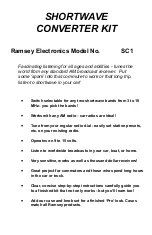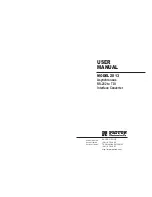
Crystal Vision
Introduction
UP-DOWN-VF models AS and ATXS feature dual frame synchronisers which can synchronise
the video outputs to one of the Vision frame’s reference inputs. The synchronisers are
downstream of the up/down conversion and so will keep the output valid regardless of the
input standard.
UP-DOWN-VF is a space-saving 96mm x 325mm module which fits in the standard ‘Vision’
frames from Crystal Vision, with the inputs and outputs accessed by using either the
VR01
,
VR03
or
VR14
rear modules. Control is by the ‘Vision’ frame active front panel, remote
‘VisionPanel’ control panel, SNMP and the ‘VisionWeb’ PC software.
1.1 Block diagram
Functional block diagram of UP-DOWN-VF (blocks shown in pink are model dependent)
Input video is firstly cable equalised and reclocked. For UP-DOWN-VF models ATX and
ATXS, the ancillary data used for AFD, WSS, VI, DVITC/ATC, Teletext and Closed Captioning
is extracted for later use.
UP-DOWN-VF has two format converters, one for up and cross conversions and the other
only for down conversions. Video is passed to both converters which both perform motion
adaptive image scaling and aspect ratio correction. Both converters are bypassed with a
matching delay. A switching block correctly routes either the converter output or delayed
bypass to the appropriate path. UP-DOWN-VF models AS and ATX have two frame store
synchronisers that time the outputs to one of the system reference signals, or can just be
used as a fixed delay. An additional 0-3 frames of delay can be added here under user control
to either match the Dolby E decoding delays or to compensate for other big delays in the
system.
Embedded audio is extracted from the video signal, and for UP-DOWN-VF models ATX and
ATXS, passed to 8 x 8 routers that allow any channel pair to be routed to any other channel
pair before being re-embedded into the video stream. PCM signals are initially delayed by a
user-controlled amount of up to 120ms and again, automatically, to match the video delay
through the synchroniser, either by resampling or by sample drop/repeat. Dolby E signals are
UP-DOWN-VF User Manual R1.1
5
23 June 2017







































